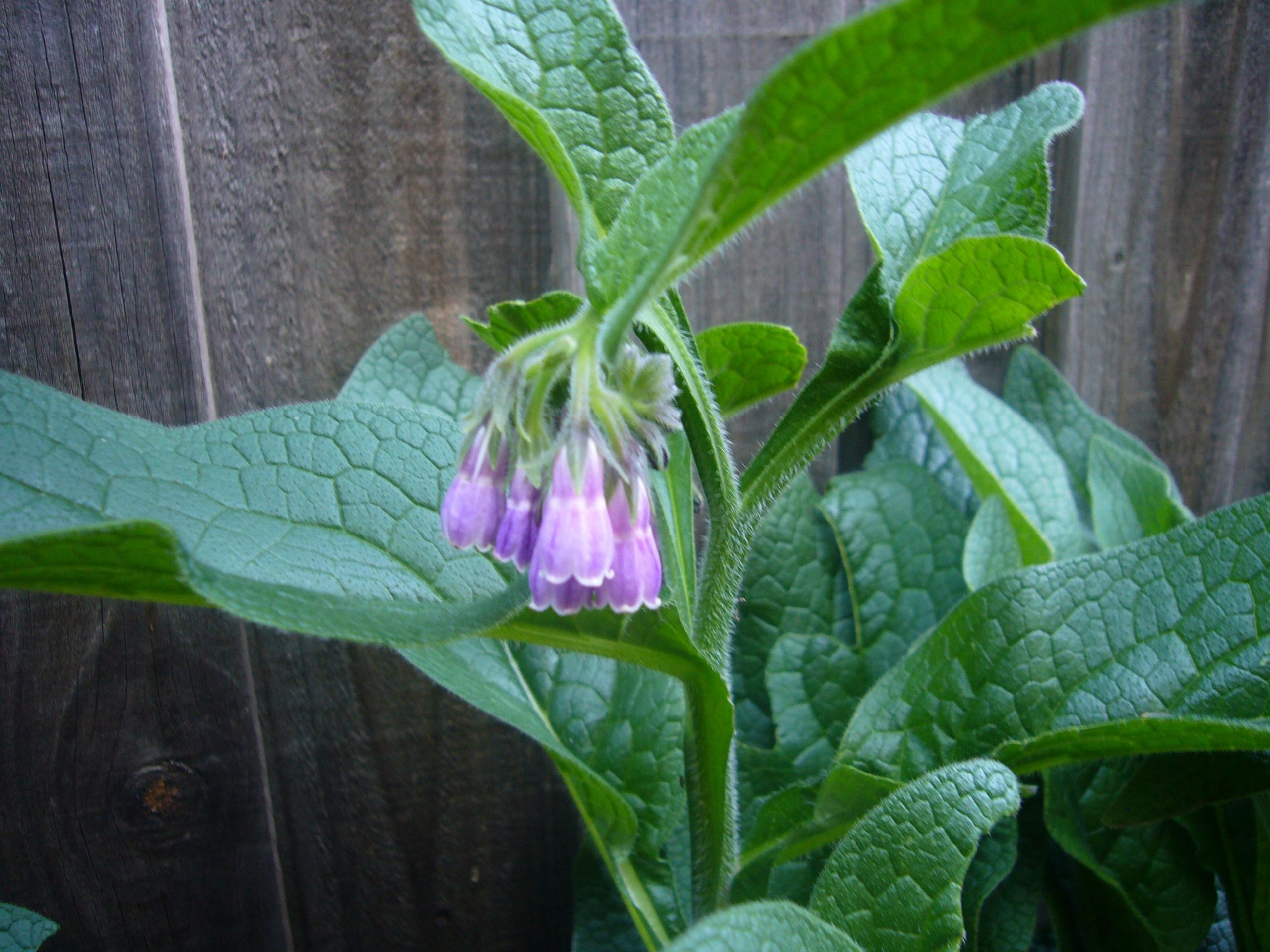The Amazing Comfrey Plant
You may have noticed this behemoth of a plant in your garden and hesitated giving it the heave ho because of its beautiful lush green leaves and pretty bell-shaped flowers. It does look a bit like a weed and it grows really LARGE (up to 4 feet wide by 5 feet tall), but if you have the space, you could think about adding it to your garden repertoire–Comfrey (which is a member of the same genus as Borage) gives back in spades:
- Pollinators love it
- Comfrey roots range to depths of 8 to 10 feet, breaking up and aerating heavy clay soil. Also, since it has that long tap root, it’s a very drought tolerant plant, keeping large lush leaves all season long.
- Use comfrey as a companion plant under fruit trees—the deep tap root captures needed potassium and other nutrients making them available as mulch when the leaves die back each season.
- Those long taproots bring up nutrients from the subsoil and transfer into the leaves, stems and flowers. Chop and mix these into your compost or directly around specific plants as a mulch for a nutrient boost. Comfrey can be pruned 4-5 times a year.
- Comfrey contains allantoin, a substance known to treat skin irritations. By crushing either dried or fresh foliage, an ointment can be made to ease rashes and poison ivy blisters. Leaves should not be applied to open wounds nor broken skin.
- Comfrey leaves can be used in poultices to help heal swellings inflammations and sores (mush leaves in hot water, squeeze out excess liquid, wrap several handfuls of the hot softened foliage in a clean cloth and apply to affected area).
How to grow: First thing, make sure you know where you want to grow comfrey—attempting to dig out all of the root system is easier said than done. Other than that, it needs average, well-drained soil with a bit of added nitrogen and some organic matter. Root cuttings or crown cuttings should all form good plants—or, more easily, just purchase a plant (seeds need a winter chill to germinate). Comfrey can grow in full sun or partial shade but will begin to wilt if exposed to extremely hot, dry conditions. It’s frost tolerant and hardy in zones 4-9.
A note of caution: Comfrey has been used in traditional medicine for centuries but newer research has shown it to do damage to the liver and lungs–it should not be taken orally or used on open wounds.


